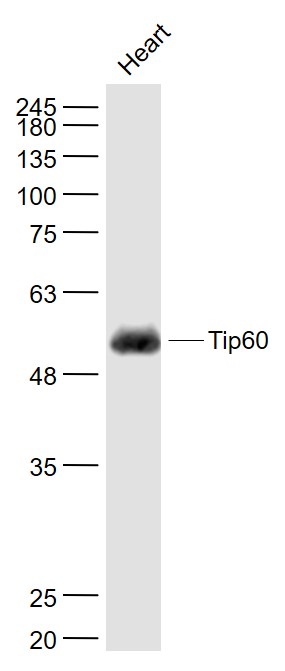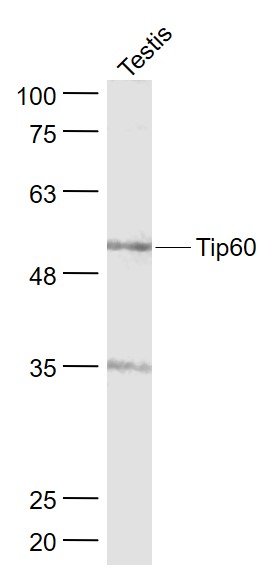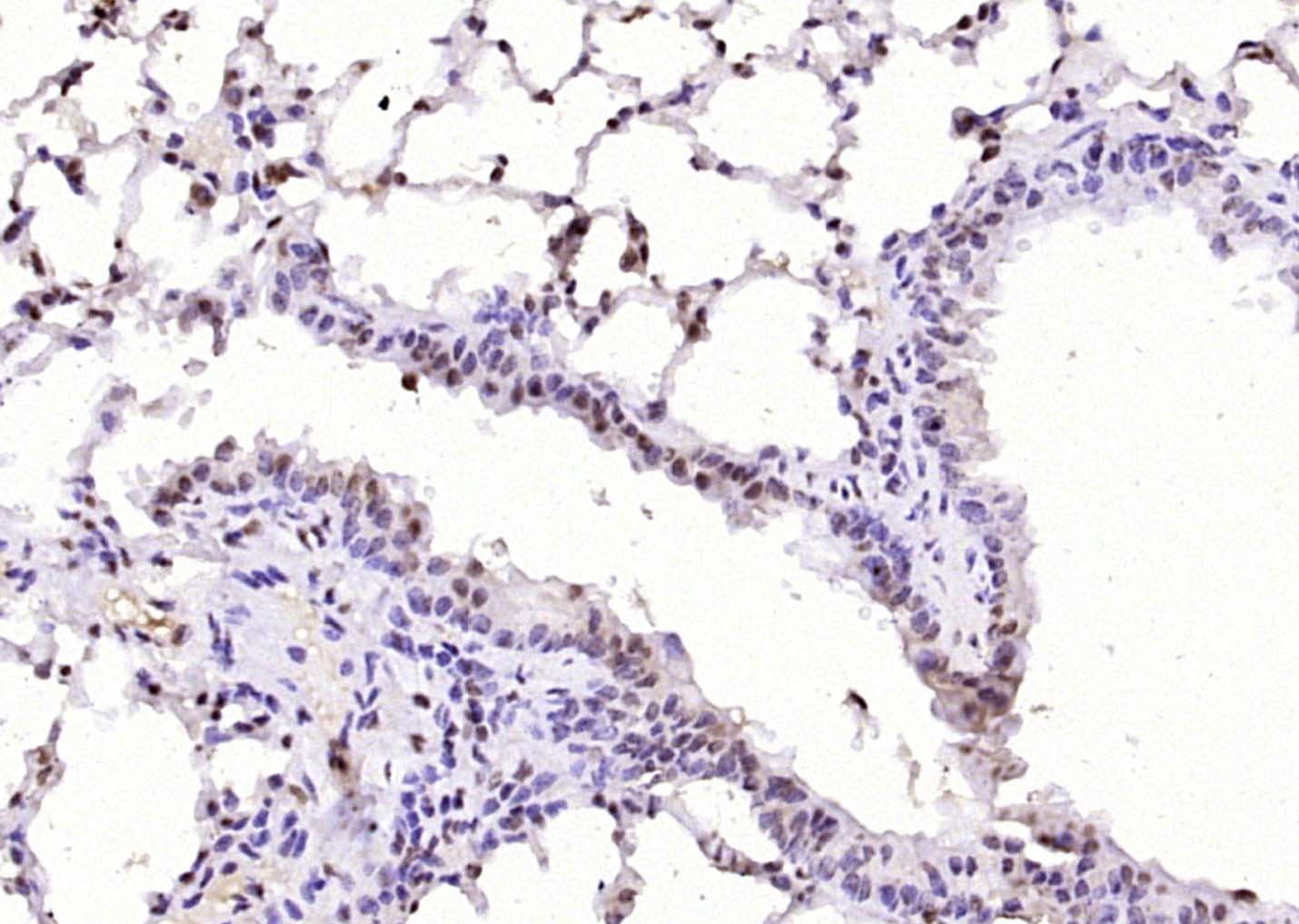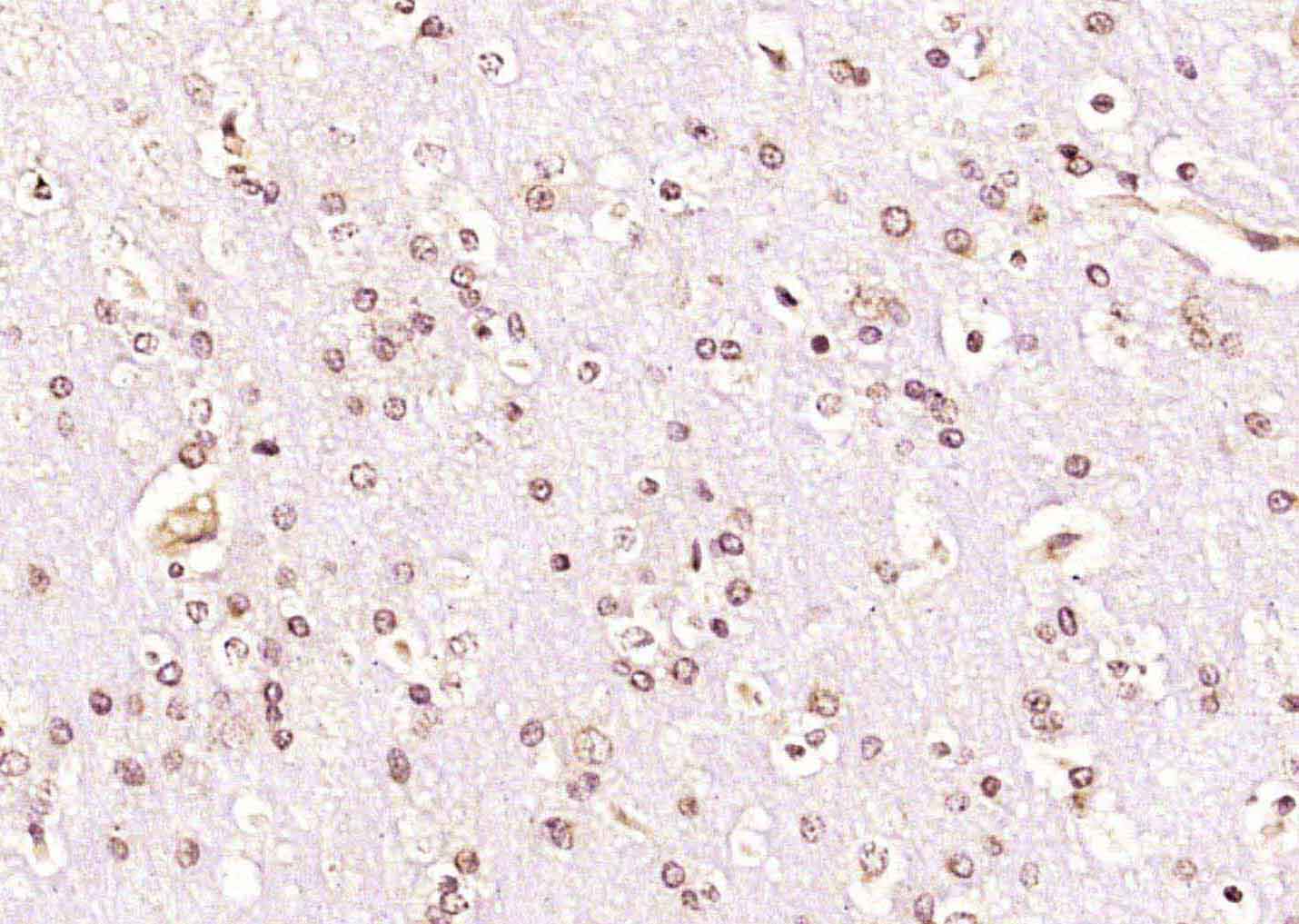
Rabbit Anti-KAT5 / Tip60 antibody
Tip60; 60 kDa Tat interactive protein; 60 kDa Tat-interactive protein; cPLA(2) interacting protein; cPLA(2)-interacting protein; cPLA2; cPLA2 interacting protein; ESA1; Histone acetyltransferase HTATIP; Histone acetyltransferase KAT5; HIV1 tat; HIV 1 Tat
View History [Clear]
Details
Product Name KAT5 / Tip60 Chinese Name TIP60抗体 Alias Tip60; 60 kDa Tat interactive protein; 60 kDa Tat-interactive protein; cPLA(2) interacting protein; cPLA(2)-interacting protein; cPLA2; cPLA2 interacting protein; ESA1; Histone acetyltransferase HTATIP; Histone acetyltransferase KAT5; HIV1 tat; HIV 1 Tat interactive protein; HIV 1 Tat interactive protein, 60kDa; HIV-1 Tat interactive protein; HTATIP; HTATIP1; K(lysine) acetyltransferase 5; K-acetyltransferase 5; KAT5; KAT5_HUMAN; Lysine acetyltransferase 5; PLIP; Tat interacting protein, 60kDa; TIP. literatures Research Area Tumour Cell biology Signal transduction transcriptional regulatory factor Epigenetics Immunogen Species Rabbit Clonality Polyclonal React Species Mouse, Rat, (predicted: Human, Dog, Pig, Horse, Rabbit, Sheep, ) Applications WB=1:500-2000 ELISA=1:5000-10000 IHC-P=1:100-500 IHC-F=1:100-500 ICC=1:100-500 IF=1:100-500 (Paraffin sections need antigen repair)
not yet tested in other applications.
optimal dilutions/concentrations should be determined by the end user.Theoretical molecular weight 59kDa Cellular localization The nucleus cytoplasmic Form Liquid Concentration 1mg/ml immunogen KLH conjugated synthetic peptide derived from human KAT5 / Tip60: 51-150/513 Lsotype IgG Purification affinity purified by Protein A Buffer Solution 0.01M TBS(pH7.4) with 1% BSA, 0.03% Proclin300 and 50% Glycerol. Storage Shipped at 4℃. Store at -20 °C for one year. Avoid repeated freeze/thaw cycles. Attention This product as supplied is intended for research use only, not for use in human, therapeutic or diagnostic applications. PubMed PubMed Product Detail MOZ (monocytic leukemia zinc finger protein) is a chromatin-associated histone acetyltransferase (HAT) that regulates chromatin remodeling and transcription. The MOZ gene was initially isolated as a consequence of two variant translocations that were identified in a distinct subtype of acute myeloid leukemias and resulted in the formation of MOZ fusion proteins. These fusions involve the HAT domain of MOZ with the activation domain of either transcriptional coactivator protein TIF2/GRIP1 or CBP, and lead to enhanced transcriptional activation by a mechanism involving aberrant histone acetylation. Additional MOZ related proteins, including MORF (MOZ related factor) and TIP60 (TAT interacting proteins 60), share significant similarities with MOZ including the putuative HAT domain. MORF also contains a strong transcriptional repression domain at its N terminus and a highly potent activation domain at the C terminus, suggesting that MORF has both HAT activity and contributes to the regulation of transcriptional activation. TIP60 was originally identified as a coactivator for the HIV TAT protein and also functions as a nuclear hormone receptor coactivator that enhances ligand dependent steroid receptor-mediated transactivation involving the androgen, estrogen and progesterone receptors.
Function:
Catalytic subunit of the NuA4 histone acetyltransferase complex which is involved in transcriptional activation of select genes principally by acetylation of nucleosomal histones H4 and H2A. This modification may both alter nucleosome-DNA interactions and promote interaction of the modified histones with other proteins which positively regulate transcription. This complex may be required for the activation of transcriptional programs associated with oncogene and proto-oncogene mediated growth induction, tumor suppressor mediated growth arrest and replicative senescence, apoptosis, and DNA repair. NuA4 may also play a direct role in DNA repair when recruited to sites of DNA damage. Directly acetylates and activates ATM. In case of HIV-1 infection, interaction with the viral Tat protein leads to KAT5 polyubiquitination and targets it to degradation.
Subcellular Location:
Nucleus > nucleolus. Cytoplasm > perinuclear region. Upon stimulation with EDN1, it is exported from the nucleus to the perinuclear region and UV irradiation induces translocation into punctuate subnuclear structures named nuclear bodies.
Post-translational modifications:
Sumoylated by UBE2I at Lys-430 and Lys-451, leading to increase of its histone acetyltransferase activity in UV-induced DNA damage response, as well as its translocation to nuclear bodies. Phosphorylated on Ser-86 and Ser-90; enhanced during G2/M phase.
Phosphorylated form has a higher activity.
Ubiquitinated by MDM2, leading to its proteasome-dependent degradation.
Similarity:
Belongs to the MYST (SAS/MOZ) family.
Contains 1 C2HC-type zinc finger.
SWISS:
Q92993
Gene ID:
10524
Database links:Entrez Gene: 10524 Human
Entrez Gene: 81601 Mouse
Omim: 601409 Human
SwissProt: Q92993 Human
SwissProt: Q8CHK4 Mouse
Unigene: 397010 Human
Product Picture
Heart (Mouse) Lysate at 40 ug
Primary: Anti- Tip60 (SL13686R) at 1/1000 dilution
Secondary: IRDye800CW Goat Anti-Rabbit IgG at 1/20000 dilution
Predicted band size: 59 kD
Observed band size: 59 kD
Sample:
Testis (Mouse) Lysate at 40 ug
Primary: Anti- Tip60 (SL13686R) at 1/1000 dilution
Secondary: IRDye800CW Goat Anti-Rabbit IgG at 1/20000 dilution
Predicted band size: 59 kD
Observed band size: 59 kD
Paraformaldehyde-fixed, paraffin embedded (mouse lung tissue); Antigen retrieval by boiling in sodium citrate buffer (pH6.0) for 15min; Block endogenous peroxidase by 3% hydrogen peroxide for 20 minutes; Blocking buffer (normal goat serum) at 37°C for 30min; Antibody incubation with (KAT5) Polyclonal Antibody, Unconjugated (SL13686R) at 1:200 overnight at 4°C, followed by operating according to SP Kit(Rabbit) (sp-0023) instructionsand DAB staining.Paraformaldehyde-fixed, paraffin embedded (rat brain tissue); Antigen retrieval by boiling in sodium citrate buffer (pH6.0) for 15min; Block endogenous peroxidase by 3% hydrogen peroxide for 20 minutes; Blocking buffer (normal goat serum) at 37°C for 30min; Antibody incubation with (KAT5) Polyclonal Antibody, Unconjugated (SL13686R) at 1:200 overnight at 4°C, followed by operating according to SP Kit(Rabbit) (sp-0023) instructionsand DAB staining.
Bought notes(bought amounts latest0)
No one bought this product
User Comment(Total0User Comment Num)
- No comment






 +86 571 56623320
+86 571 56623320
 +86 18668110335
+86 18668110335

